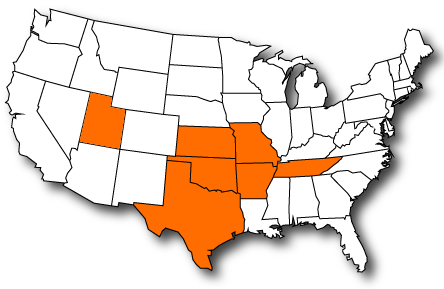Dental malpractice insurance is a crucial component of risk management for dental professionals. Just like any other medical field, dentistry carries inherent risks, and malpractice insurance provides financial protection in the event of lawsuits alleging negligence or errors in patient care.
In this comprehensive guide, we will delve into the intricacies of dental malpractice insurance, including its costs, coverage options, factors influencing premiums, and important considerations for dental practitioners in Arkansas.
Understanding Dental Malpractice Insurance in Arkansas:
Dental malpractice insurance serves as a safeguard for dental professionals against the financial repercussions of malpractice claims. It shields dentists and their practices from legal liabilities stemming from a range of scenarios, such as misdiagnoses, errors in treatment, complications arising from surgical procedures, instances where informed consent wasn’t obtained, and breaches of patient confidentiality.
Without adequate insurance coverage, dentists risk facing substantial financial losses, including legal fees, settlement payments, and damage awards, which could jeopardize their practices and personal assets. By investing in dental malpractice insurance, practitioners can mitigate these risks and focus on providing quality care to their patients without the looming fear of litigation.
Moreover, dental malpractice insurance provides peace of mind and reassurance to patients, knowing that their dental providers are backed by insurance in the unlikely event of an adverse outcome. This protection not only benefits dentists but also contributes to maintaining trust and confidence in the dental profession as a whole.
Coverage Options:
Dental malpractice insurance policies typically offer two primary types of coverage: claims-made and occurrence-based.
- Claims-Made Coverage:
- This type of coverage protects against claims made during the policy period.
- Claims-made policies require that the claim be filed and reported to the insurance company while the policy is active.
- Premiums for claims-made policies are initially lower but may increase over time, especially if the dentist switches insurers or retires.
- Occurrence-Based Coverage:
- Occurrence-based coverage protects against claims arising from incidents that occur during the policy period, regardless of when the claim is filed.
- Once an occurrence-based policy is purchased, coverage remains in effect indefinitely for incidents that occurred during the policy period.
- Premiums for occurrence-based policies are typically higher upfront but offer more predictable long-term costs.

Factors Influencing Premiums:
Several factors influence the cost of dental malpractice insurance premiums:
- Experience and Specialty:
- Dentists with more experience and a proven track record of safe practice may qualify for lower premiums.
- Specialists, such as oral surgeons or endodontists, may face higher premiums due to the increased complexity and risk associated with their procedures.
- Location:
- The geographic location of the dental practice can significantly impact insurance premiums.
- Urban areas with higher population densities and greater competition among dental practitioners may have higher premiums due to increased litigation risks.
- Claim History:
- Dentists with a history of malpractice claims or disciplinary actions may face higher premiums.
- Insurance companies assess the frequency and severity of past claims when determining premiums.
- Coverage Limits:
- Higher coverage limits result in higher premiums.
- Dentists must carefully evaluate their practice’s needs and potential liability risks when selecting coverage limits.
- Risk Management Practices:
- Insurance companies may offer discounts or incentives for dentists who implement risk management protocols, such as patient safety initiatives and continuing education programs.
Costs of Dental Malpractice Insurance:
The cost of dental malpractice insurance is influenced by various factors, as outlined earlier. On average, dentists can expect to pay annual premiums ranging from $1,500 to $9,000. However, these figures are not set in stone and can fluctuate significantly based on individual circumstances.
For instance, dentists practicing in high-risk specialties, such as oral surgery or endodontics, may face substantially higher premiums due to the increased complexity and potential for adverse outcomes associated with these fields.
Furthermore, practitioners with a history of malpractice claims or disciplinary actions may find themselves on the higher end of the premium spectrum. In extreme cases, premiums can surpass $20,000 or even more, particularly for dentists operating in areas with a heightened risk of litigation or those practicing in underserved communities where access to dental care may be limited.
Despite the variability in costs, dental malpractice insurance remains a critical investment for dental professionals, offering vital financial protection and peace of mind in an inherently litigious field. By carefully evaluating their insurance needs and exploring coverage options, dentists can make informed decisions to safeguard their practices and assets against potential legal liabilities.
Important Considerations:
When purchasing dental malpractice insurance, dentists should consider the following factors:
- Policy Exclusions and Limitations:
- Dentists should carefully review policy exclusions and limitations to ensure adequate coverage for their practice.
- Common exclusions may include intentional acts, criminal activities, and claims arising from services not covered under the policy.
- Consent to Settle:
- Some insurance policies include a “consent to settle” clause, which gives the insurer the authority to settle claims without the dentist’s consent.
- Dentists should understand the implications of this clause and consider policies that require their approval before settling claims.
- Tail Coverage:
- Dentists with claims-made policies should consider purchasing tail coverage (also known as extended reporting coverage) when retiring or switching insurers.
- Tail coverage protects claims made after the policy has expired but relates to incidents that occurred while the policy was active.
- Financial Stability of Insurer:
- Dentists should choose an insurance provider with a strong financial rating and a history of timely claim payments.
- A financially stable insurer provides reassurance that claims will be adequately covered in the event of a lawsuit.
- Regulatory Requirements:
- Dentists must comply with state-specific regulations regarding malpractice insurance requirements.
- Some states mandate minimum coverage limits or require dentists to maintain malpractice insurance as a condition of licensure.
Conclusion:
Dental malpractice insurance is an essential investment for dental practitioners to protect their livelihood and assets against the financial risks associated with malpractice claims.
By understanding the coverage options, factors influencing premiums, costs, and important considerations, dentists can make informed decisions when selecting insurance policies.
Ultimately, securing comprehensive malpractice insurance coverage is a critical aspect of ensuring the long-term success and sustainability of a dental practice.
Ready to protect your dental practice? Contact G&G Independent Insurance today for a personalized quote and expert advice on dental malpractice insurance in Arkansas!


